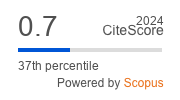Safety profile of immediate post-partum intrauterine device insertion during caesarean delivery – a clinical trial with three years of follow up
Utility of Immediate Post Placental Insertion of Intrauterine Device During Cesarean Delivery
DOI:
https://doi.org/10.47723/kcmj.v18i1.797Keywords:
immediate post-partum intrauterine device, immediate long-acting reversible contraception, cesarean delivery, complications of immediate intrauterine device insertion, expulsion rate of intrauterine device, stich fixationAbstract
Background: Many countries recommend the use of long-acting reversible contraceptive intrauterine device immediately after cesarean delivery. The cesarean delivery rate in Iraqi public hospitals is 32.2% and may reach 85.8% in private hospitals. Immediate post-partum intrauterine device insertion at cesarean is rarely done in Iraq.
Objectives: To assess the safety and practicality of immediate post-partum intrauterine device insertion during cesarean delivery for family planning and pregnancy spacing in Iraqi women.
Subjects and Methods: A single arm clinical trial included 150 eligible women who attended Al-Elwiyah Maternity Teaching Hospital or Al Hayat Rahibat Hospital for term delivery. A copper intrauterine device was placed in the uterine cavity immediately after delivery of the placenta during cesarean delivery. The intrauterine device was fixed in place at the fundus using an absorbable suture. Patients were followed up at six weeks, then annually for three years.
Results: Expulsion of the intrauterine device was not reported by any of the participants. The most-reported complaints in the first twelve months of intrauterine device placement were abdominal pain, abnormal vaginal discharge, and heavy menstrual blood loss, however, none were statically significant (P= 0.256). After the first year, there was a significant reduction in the frequency of complaints (P= 0.002). Only 7.33% (95% CI: 6.92–7.75%) of the patient requested intrauterine device removal within the three years. The main reason was to plan a new pregnancy followed by recurrent infection associated with uncontrolled diabetes mellitus. Diabetes was a significant predictor for immediate post-partum intrauterine device removal, P= 0.049.
Conclusion: The intrauterine device placement during cesarean delivery with suture fixation is a safe procedure with a zero-expulsion rate and is an effective reversible long-term contraceptive method.
Downloads
Published
Versions
- 2022-05-05 (2)
- 2022-05-05 (1)
Issue
Section
License
Copyright (c) 2022 AL-Kindy College Medical Journal

This work is licensed under a Creative Commons Attribution 4.0 International License.














